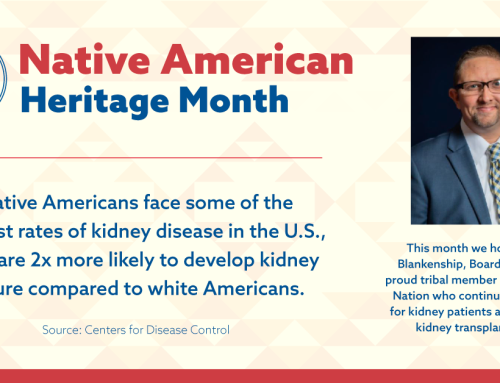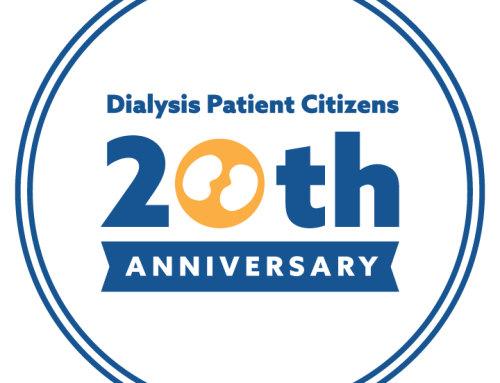Each April, National Donate Life Month encourages Americans to register as organ, eye, and tissue donors; to become educated about living donation (that includes living kidney donation!); and to honor those that have saved lives through the gift of donation. Over 100,000 children, men, and women are waiting for lifesaving organ transplants, with a new person added to the national transplant waiting list every 10 minutes. Here is some more information on the different types of transplant and what you can do to help.
What are the different types of organ donation?
Living donation – living donation is an opportunity to save a life while you are still alive; relatives, loved ones, friends, or even people wishing to stay anonymous may serve as living donors. Living donation can provide organs patients in need of either a kidney or liver transplant much sooner than from a deceased donor. If you are interested in becoming a living donor, you can contact a living donor transplant program in your area. If you are interested in finding a living donor or need more patient information, visit UNOS TransplantLiving.org/living-donation.
Deceased organ, eye, and tissue donation – deceased donation is what most people think of when they hear “organ donation”. This is giving an organ (or part of an organ), eye, or tissue donation at the time of death. Only after all efforts to save the patient’s life have been exhausted and tests have been performed to confirm the death of the patient, is donation a possibility. You can register to become a donor at DonateLife.net/register.
Vascularized Composite Allografts (VCAs) – VCAs are the transplant of multiple structures that may include skin, bone, muscles, blood vessels, nerves and connective tissue, the most common being hand and face transplants. This can not only return vital functions, but also identity to people who have suffered a massive illness or injury. VCA requires specific authorization that is separate from standard donor registration – it is never assumed as part of a registration to be an organ, eye, and tissue donor. To learn more, visit DonateLife.net/types-of-donation-vca.
Pediatric Donation – Pediatric transplant is slightly different from regular organ donation; organ size is crucial for the success of a transplant, so child-sized organs work best. Teens 15–17 years old can register their intent to be an organ, eye and tissue donor (this is easy to do while registering for a driver’s license at the DMV) or at DonateLife.net/register, or RegisterMe.org. A parent or legal guardian must authorize an organ, eye or tissue donation for anyone under the age of 18.
For more information, statistics, and other things you can do to help, visit DonateLife.net.
In March 2021, the Living Donor Protection Act was introduced to protect the rights of living organ donors and promote organ donation. You can learn more about the bill here and urge congress to support this bill by taking action here.
The DPC Education Center has additional resources related to finding a living kidney donor. Watch our webinar Having Your Donor Find YOU!, see our articles How to Ask for a Living Donor and Are There Living Kidney Donor Registries?; and read about The Gift of Life: A Donor’s Perspective in The Kidney Citizen Issue 1.





























